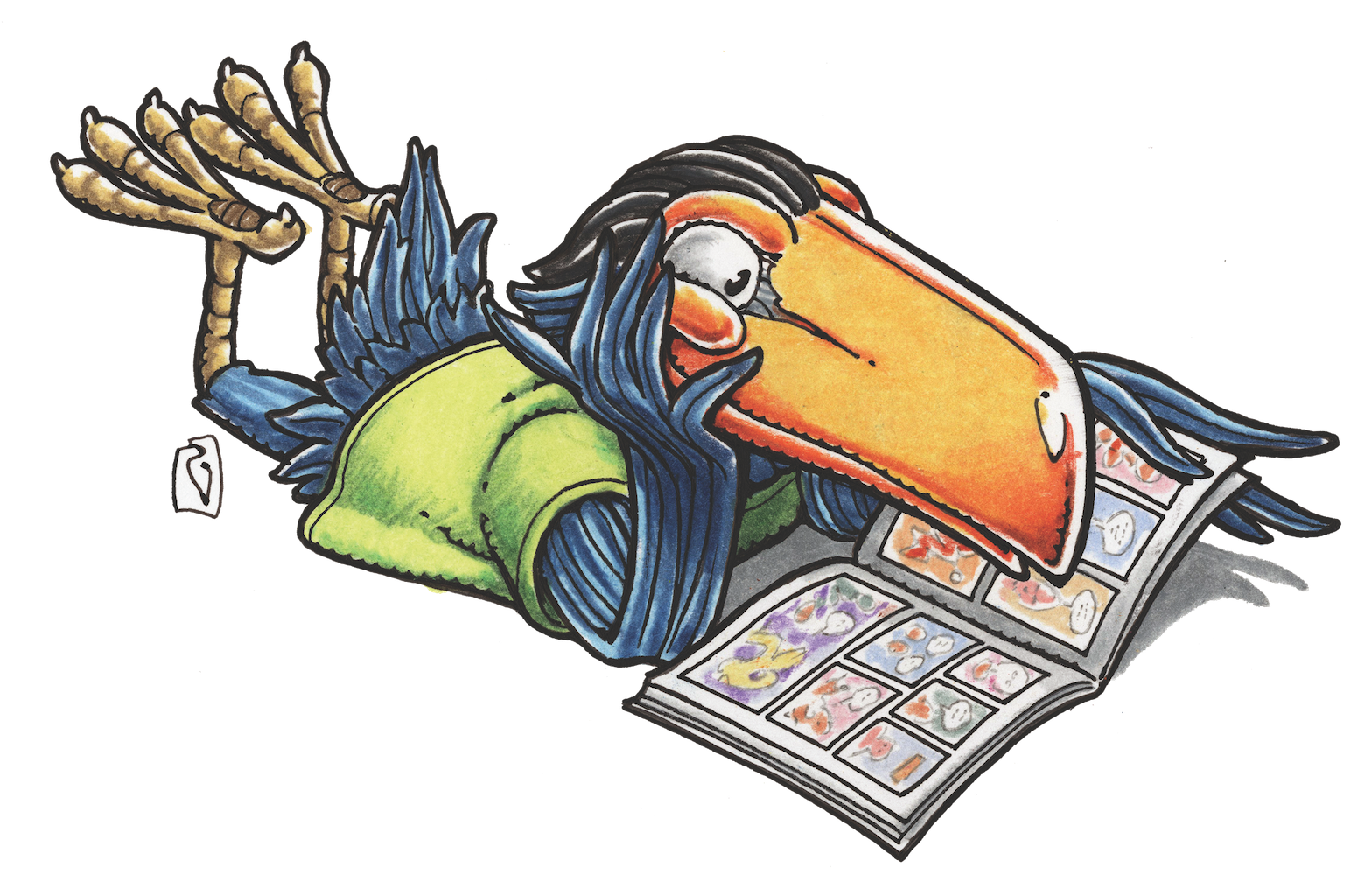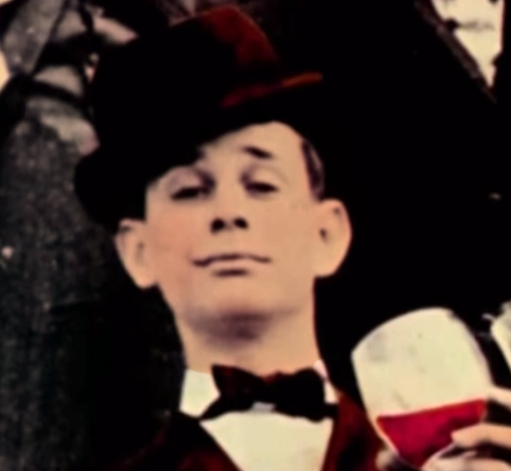JESSE HAMM’S CAROUSEL
Carousel 012: Thumbnails


When I was twelve, and living in Sedona, I decided to climb a mountain called Greyback, which was situated just outside of town. From my vantage point in town, Greyback appeared to be one solid, sloping mass. Navigating it would be easy: All I had to do was keep walking toward the mountain until I found myself on top! Nature, however, had other ideas. After climbing for several hours, I reached a point about halfway up the mountain and could go no further: between me and the summit lay a giant chasm. What appeared from town to be one mountain was actually two unequal peaks, layered one in front of the other. I had climbed a decoy!
Artistic goals often come with similar pitfalls. What looks at first like one simple destination can splinter into several, luring you from your initial goal. Sometimes, well-meaning teachers even encourage us to follow such false trails. For example, many how-to-draw-comics books begin with a chapter on art supplies, followed by chapters on drawing faces, anatomy, perspective, and so on, as though these things are a cartoonist’s first priority. Only near the end do we usually find a quick primer on thumbnailing pages—after we’ve already loaded our brains with a dozen other concerns. No wonder so many young artists toil away at perfecting their textures, faces, and figures, while their storytelling remains murky and thoughtless. Strong draftsmanship may help you on your storytelling journey, but it should neither be the starting point, nor the destination.
Visual storytelling begins and ends with this: picking the right objects, in the right moments, and revealing them from the right angles, in the right order. If you draw well, all the better! But drawing well isn’t paramount. Cartoonists like Cathy Guisewite, Chris Onstad, and Scott Adams are able to craft effective scenes without drawing well. Good filmmakers do the same without drawing at all. They aren’t draftsmen; they are moment-and-object-choosers. This should be your first concern, too. After all, a comic’s main appeal is that it tells a story: A succession of moments whose combined meaning surpasses the sum of its parts. Manage this well, and readers won’t care about your bad drawings. But manage it poorly, and they won’t even care about your good drawings.
This is why I think how-to books should begin with the chapter on thumbnails (AKA “layouts.” In fact, I wouldn’t mind seeing an instructional book that contains only chapters on thumbnailing, and leaves perspective and anatomy for other books.) Were I to write such a chapter, here are some steps I’d share:
Select a script, and divide each scene into the fewest essential moments. These will be your panels. List those moments in order and look them over. Can you afford to cross one out? What happens if you add a moment, or break one moment into several? What if you were to select the moment immediately before—or after—a moment you’ve picked: would the scene read better?
After settling on which moments to use as panels, ask yourself which objects absolutely need to appear in each panel. By “objects,” I mean characters, props, and parts of the environment. If you leave out the Eiffel Tower, will readers still know the scene is in Paris? But if you leave IN the Eiffel Tower, will they know the scene is more about Margot’s heartbreak than her locale? Tread carefully, and keep asking yourself which objects are crucial to your meaning.
You’ve chosen which objects are crucial; next you must choose which parts of them are crucial. To discern Margot’s mood, do we need to see her from head-to-toe? Will a close-up suffice? What if we only see her eyes? How much of the Eiffel Tower must be visible, and which part? Don’t be stingy … but don’t overshare. Somewhere between those two extremes lurks the emotional note you wish to hit. Keep lensing in and out until you find it.
(Keep in mind: we still haven’t begun drawing! Picture your panels in your mind’s eye, but don’t get caught up in “arting” before you finish your “moment-and-object-choosing.”)
Decisions about which parts of which objects to reveal will help determine which angles you’ll use. For example: if nothing but Margot’s face and the top of the Eiffel Tower should be visible, an up-shot from somewhere below Margot’s jaw-line may be in order. This is the stage where you’ll finally need to start sketching. You’ll also need to plan your speech balloons at this stage. Where will each balloon read best? Don’t worry here about drawing accurately, or the size or shape of your panels, or how they’ll fit on a page. All you need to record at this point is a succession of simple images that tell your story. Stick figures and speech balloons—drawn on napkins, if you like.
Next, read your panels in order. Do they flow? Do they lack clarity? You may need to adjust your “camera” angles here to prevent a bumpy read.
Finally, it’s time to arrange your story moments on a properly-shaped page. What should the panels’ shapes and size relationships be? Perhaps one or two will be large and the others small, or perhaps their sizes will be uniform. The scene itself will tell you. Keep re-watching it in your mind and its rhythm will emerge.
After arranging your panels on pages, read them like a finished comic. Is this the feeling you had when you first imagined the story? Does it flow? Keep tinkering until it feels right. Since you kept your sketches simple, redrawing any “problem” panels won’t take long.
The steps above are just a suggestion, not the only way to thumbnail. But any method you choose should prioritize the scene’s key moments and objects, and should include all the tinkering necessary to make the story read clearly. This, more than supplies or draftsmanship or any other concern, should be your focus as a cartoonist. Don’t waste time wandering up the wrong mountain. If the story works in your thumbnails, you have nine- tenths of a comic! If it doesn’t, you have nothing.
See you here next month!
Jesse Hamm’s Carousel appears the second Tuesday of each month here on Toucan!